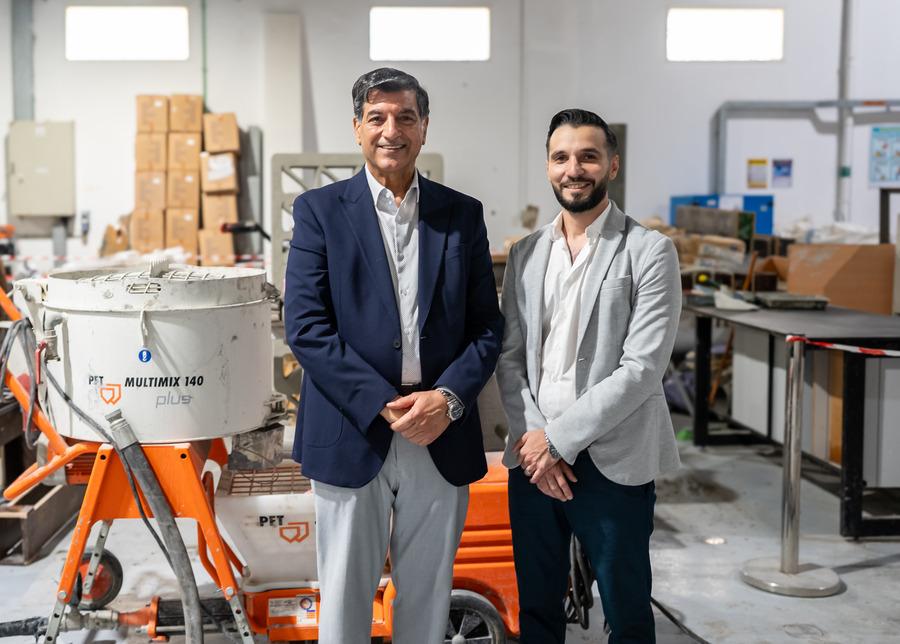- About
- Admissions
- Study at AUS
- Prospective Students
- Bachelor's Degrees
- Master's Degrees
- Doctoral Degrees
- Admission Publications
- International Students
- Contact Admissions
- Grants and Scholarships
- Sponsorship Liaison Services
- Testing Center
- New Undergraduate Student Guide
- Undergraduate Orientation
- New Graduate Student Guide
- Graduate Orientation
- File Completion
- Payment Guide
- Students with Disabilities
- Executive and Continuing Education
- Academics
- Life at AUS
- Research
- Publications
- Contact Us
- Apply Now
- .

UAE’s first patent granted for structural 3D printed concrete innovation using local materials
Dr. Adil Tamimi, Professor of Civil Engineering at American University of Sharjah (AUS), and AUS civil engineering alumnus Ahmad Bakir have been granted the UAE’s first patent for a structural-grade, self-reinforced 3D printed concrete mixture designed specifically for the Gulf’s demanding construction environment. Issued on April 17, 2025, under Ministerial Decision IP-2025-00491 and registered as Patent # 8268. The university is excited to celebrate this personal milestone for the inventors, who pursued this work as part of their academic and research journey at AUS.
The patented mixture strengthens itself, reducing and potentially eliminating the need for conventional steel reinforcement. By combining engineered fibers and specialized cementitious composites with raw materials sourced locally in the UAE, the innovation offers superior tensile strength, improved crack resistance and long-term durability. In addition to addressing the challenges of extreme heat, humidity and saline exposure, the material reduces construction waste, lowers embodied carbon and minimizes dependence on imported components—making it a sustainable, region-specific solution.
“This patent is a step forward in achieving the UAE’s goals in digital construction, localization and sustainability,” said Dr. Tamimi. “It aligns with national strategies such as UAE Vision 2031 and the Fourth Industrial Revolution Strategy, which emphasize advanced manufacturing, homegrown innovation and future-ready infrastructure.”
Reflecting on his role in the project, Bakir said: “Being part of this project during my time at AUS gave me the opportunity to contribute meaningfully to something that could influence how we build in the region. It showed me how research can translate into real innovation, and I’m proud to be part of this accomplishment.”
The team’s efforts build on years of work at AUS in engineered cementitious composites, robotic extrusion and sustainable construction technologies. Researchers’ contributions have already advanced the field of 3D concrete printing in the UAE, including involvement in the construction of the first 3D printed villa in Sharjah, in collaboration with the Sharjah Research, Technology and Innovation Park. Through their in-house Semi-Automation System, the researchers and graduate students tested and refined printable concrete mixtures, extrusion nozzles and bonding techniques to enhance the structural performance of 3D printed components.
Looking ahead, the inventors are preparing for the next stage: technology transfer and collaboration with the construction sector. They aim to pilot the patented mixture in real-world projects across the UAE and adapt it for different printing methods and structural applications. The team is also finalizing peer-reviewed publications to share their findings with the global engineering community.
“Our goal is to take this from lab to site,” added Dr. Tamimi. “We are working to integrate this innovation into projects that can deliver faster, stronger and more sustainable outcomes for the region’s built environment.”

